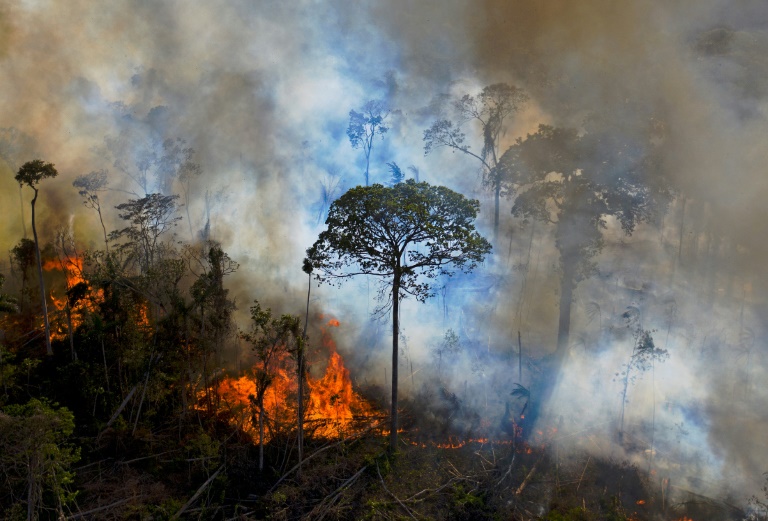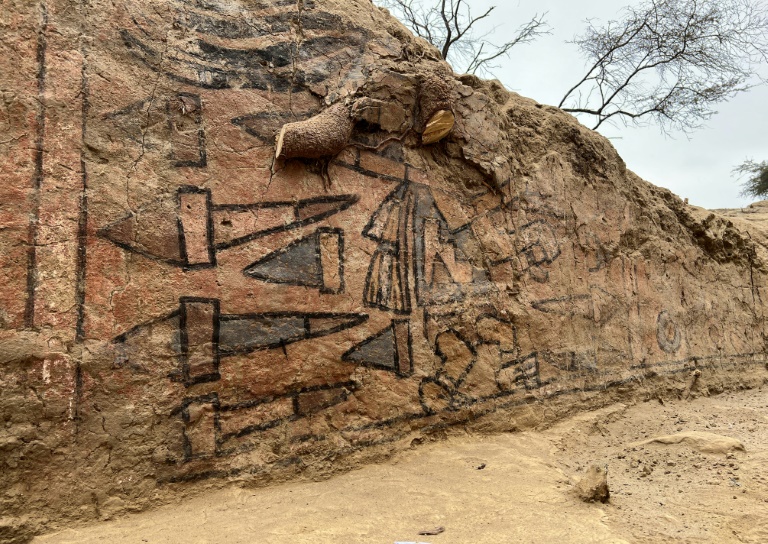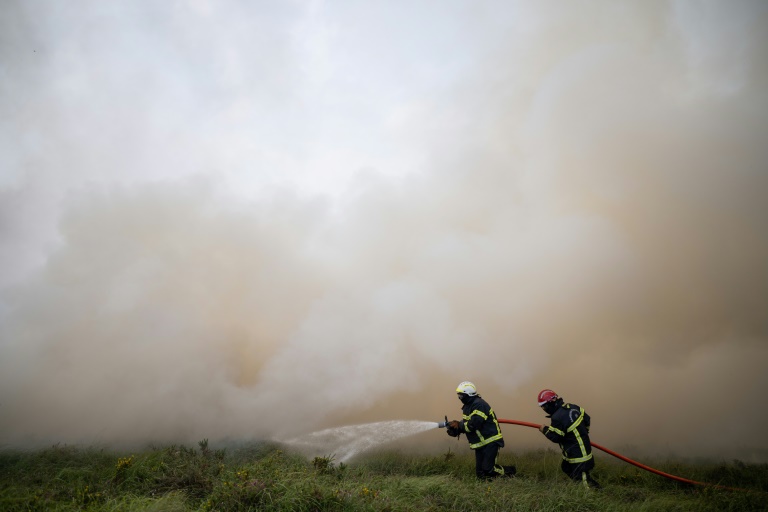Brazilian Amazon deforestation falls, but up 60% under Bolsonaro
Deforestation in the Brazilian Amazon destroyed an area bigger than Qatar in the 12 months through July 2022, according to official figures, which showed a decline from the year before — but a sharp increase overall under President Jair Bolsonaro
Deforestation in the Brazilian Amazon destroyed an area bigger than Qatar in the 12 months through July, according to official figures released Wednesday, which showed a decline from the year before — but a sharp increase overall under outgoing President Jair Bolsonaro.
In the latest grim news on the world’s biggest rainforest, satellite monitoring showed 11,568 square kilometers (4,466 square miles) of forest cover was destroyed in the Brazilian Amazon from August 2021 to July 2022, according to national space agency INPE’s annual deforestation tracking program, PRODES.
The figure was a decrease of 11.3 percent from the year before, when INPE detected 13,038 square kilometers of deforestation — a 15-year high.
But it closed out four years of what environmentalists call disastrous management of the Amazon under the far-right Bolsonaro, whose successor, veteran leftist Luiz Inacio Lula da Silva, has vowed to work toward zero deforestation when he takes office on January 1.
Under agribusiness ally Bolsonaro, average annual deforestation rose by 59.5 percent from the previous four years, and by 75.5 percent from the previous decade, according to INPE figures.
“The Bolsonaro government was a forest-destroying machine… The only good news is that it’s about to end,” said Marcio Astrini, executive secretary of the Climate Observatory, a coalition of environmental groups.
“Jair Bolsonaro will hand his successor a filthy legacy of surging deforestation and an Amazon in flames,” he said in a statement, urging Lula — who previously led Brazil from 2003 to 2010 — to show “zero tolerance” for environmental crimes.
Bolsonaro’s office and the environment ministry did not immediately respond to requests for comment.
Experts say the vast majority of the clear-cutting and fires erasing the Amazon are to create new farmland — especially for cattle ranches in Brazil, the world’s top beef exporter.
The deforestation figures show the Amazon is being pushed toward a “tipping point,” warned Mariana Napolitano, science director at the World Wildlife Fund (WWF) Brazil office.
“Significantly reducing deforestation… is imperative for humankind in the face of the twin climate and nature crises the world is facing,” she said in a statement.
– All eyes on Lula –
Environmentalists said the figures had been ready since November 3, and accused the government of stalling their release to avoid embarrassment at the United Nations’ COP27 climate conference in Egypt.
Bolsonaro, who has faced international outcry over the Amazon, did not attend the conference.
Lula did, fresh off defeating Bolsonaro in a runoff election.
The 77-year-old president-elect received a rock star’s welcome from climate campaigners hoping Brazil will now do a far better job protecting its 60-percent share of the Amazon, whose billions of carbon-absorbing trees are a key buffer against global warming.
“Brazil is back,” Lula told the conference, vowing to fight to end illegal deforestation and revive the internationally backed, $1.3-billion Amazon Fund to protect the rainforest — suspended under Bolsonaro.
Annual deforestation in the Brazilian Amazon fell by 75 percent during Lula’s first presidency, an accomplishment many experts attribute to respected former environment minister Marina Silva — now tipped to return to the job.
But Lula also faced criticism during his previous two terms from environmentalists — including Silva — over some policies, such as the controversial decision to push ahead with the massive Belo Monte hydroelectric dam in the Amazon.
The latest figures came the same day as a new study that found 90 percent of all land deforested in Brazil has been converted to pasture.
The Amazon is the region with the most pasture land, found the study from satellite tracking institute MapBiomas.
It found the amount of pasture in the Amazon grew 40 percent in the past two decades, as Brazil emerged as the world’s top beef powerhouse.









